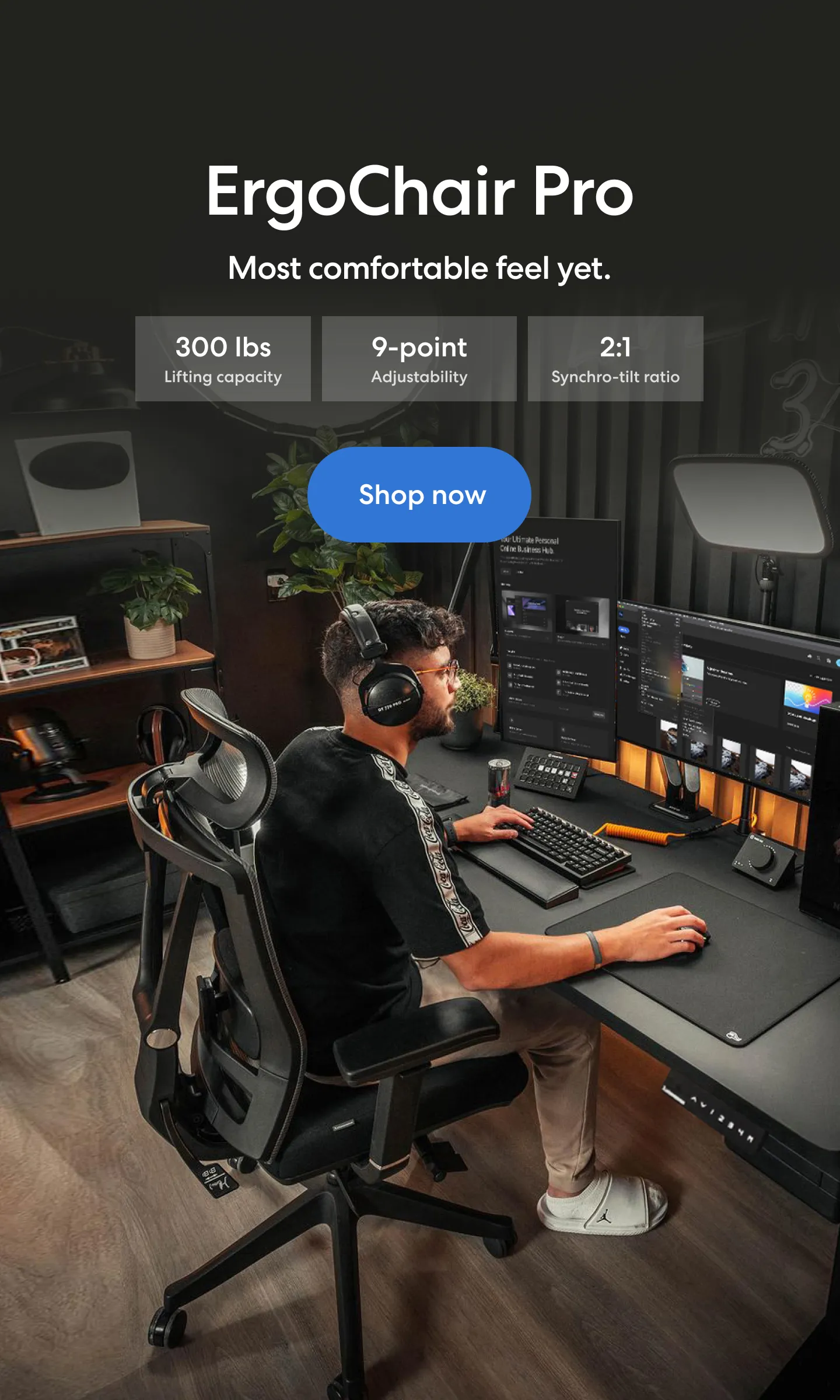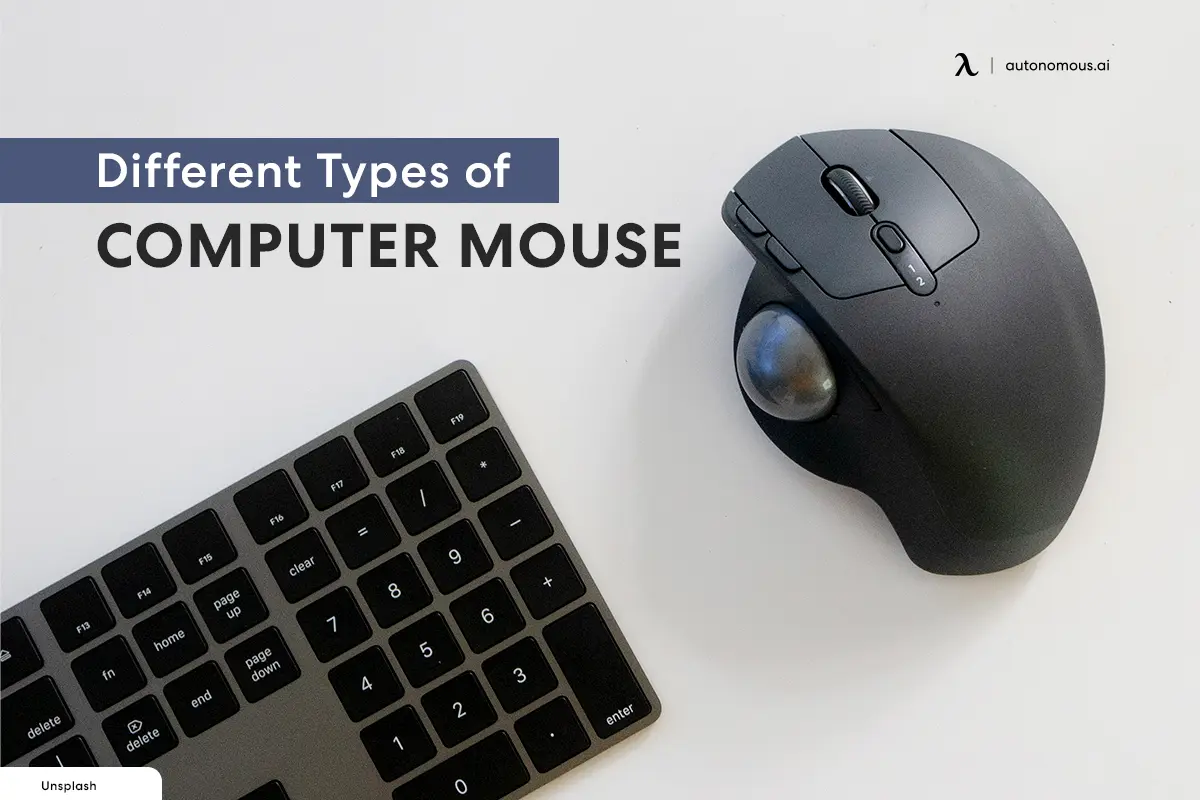
Table of Contents
When you think of a computer mouse, you probably imagine a simple device that moves a pointer on your screen. But there's actually a lot more going on under the hood. From old-school trackballs to advanced gaming gear, mice come in all shapes and technologies to fit different tasks, preferences, and hands.
So, what are the different types of computer mice, and how do they compare? Let’s break it all down.
Is There a Difference Between Types of Computer Mouse?
Yes, there is! While all computer mice serve the same basic function—moving the cursor on the screen—there are notable differences in how they work, their precision, and their intended uses. There are several different types of mice available, each designed to cater to different needs.
The type of computer mouse you choose can directly impact your experience based on your needs, whether you’re gaming, working, or just browsing the web.
Let’s break down how each type of mouse works and what makes them unique.
Type of Mouse | Description | Advantages | Disadvantages | Typical Use Cases |
Optical Mouse | Uses an LED light and sensor to track movement | Accurate, works on most surfaces, affordable | May struggle on glossy or transparent surfaces | General use, office work, everyday computing |
Laser Mouse | Uses a laser for more sensitive and precise tracking | High precision, works on more surfaces, good for fine control | More expensive than optical mice | Gaming, design work, professional applications |
Trackball Mouse | Cursor is controlled by rotating a ball on the device | Reduces wrist strain, excellent precision, stationary use | Takes time to learn, usually larger | Ergonomic setups, limited desk space, specialized work |
Wireless Mouse | Connects via USB receiver or Bluetooth | Cable-free, flexible movement, portable | Battery charging or replacement, possible latency | General use, travel, hybrid work |
Gaming Mouse | High DPI sensors and extra buttons for fast response | Very precise, customizable, ergonomic designs | Higher cost, may feel complex for non-gamers | Gaming, professional streaming, esports |
Ergonomic Mouse | Sculpted or vertical shape reduces wrist and hand strain | Improves posture, relieves pressure points | Pricier, short adjustment period | Prolonged computer use, wrist pain relief |
Touchpad | Built-in touch surface for gesture control on laptops | Compact, supports multitouch, no extra device needed | Less precise, limited for advanced work | Laptops, portable use, casual computing |
TrackPoint | Small joystick-like control on laptop keyboards | Saves space, allows quick cursor movement without hand repositioning | Steeper learning curve, rare on non-business laptops | Business laptops, travel |
Stylus Mouse | Pen-like device often paired with a tablet | High precision, great for illustration and design | Needs compatible tablet, more expensive | Graphic design, CAD, digital art |
Vertical Mouse | Upright design that supports a handshake grip | Reduces wrist rotation, ergonomic support | Bulkier, takes time to adapt | Wrist pain, ergonomic-focused workspaces |
3D Mouse | Lets users navigate in 3D space without moving the device | Specialized control for 3D models, CAD, and VR | Expensive, niche use | 3D modeling, CAD, virtual environments |
Silent Click Mouse | Uses dampened switches to eliminate click noise | Quiet operation, ideal for shared spaces | Limited tactile feedback | Libraries, offices, meeting rooms |
Travel Mouse | Compact, sometimes foldable, built for mobility | Lightweight, portable, easy to carry | Smaller size may be uncomfortable for long use | Travel, mobile work, hybrid setups |
Adaptive Mouse | Customizable inputs for accessibility | Inclusive design, can be tailored to specific physical needs | Specialized and often more costly | Accessibility use, customized setups |
Smart Mouse | Gesture or touch-based navigation with multi-device connectivity | Advanced controls, minimalistic, often supports gestures | Pricier, may require setup | Hybrid work, Mac users, gesture-based navigation |
1. Classic Foundations: Mechanical vs Optical vs Laser
Among the different types of mouse, the mechanical, optical, and laser models form the foundation of modern computer input devices. Understanding these core technologies helps explain how mouse design has evolved—and makes it easier to identify what type of mouse you have.
- Mechanical mouse:
A mechanical mouse uses a rubber-coated ball to track movement. As the ball rolls, sensors inside translate the motion into cursor movement. It’s a key part of the definition of mouse in computer history, though less common now due to maintenance needs.
- Optical mouse:
An optical mouse replaced the ball with an LED and sensor. It’s reliable, affordable, and works on most surfaces—except glass or glossy finishes, and works on most flat surfaces, though glossy or transparent ones can be a challenge. This type remains a common choice for daily use because it’s affordable and low-maintenance.
- Laser mouse:
A laser mouse takes optical tracking further by using a laser beam for higher sensitivity and precision. It can detect finer movements and works on a broader range of surfaces, including glass. Designers, gamers, and professionals often choose laser models for their responsiveness.
If you’re unsure what type of mouse you have, simply turn it over. A visible ball indicates a mechanical mouse. A light or laser underneath usually means optical or laser.
For more details on laser vs optical mouse, check out our descriptive comparison between laser vs optical mouse.
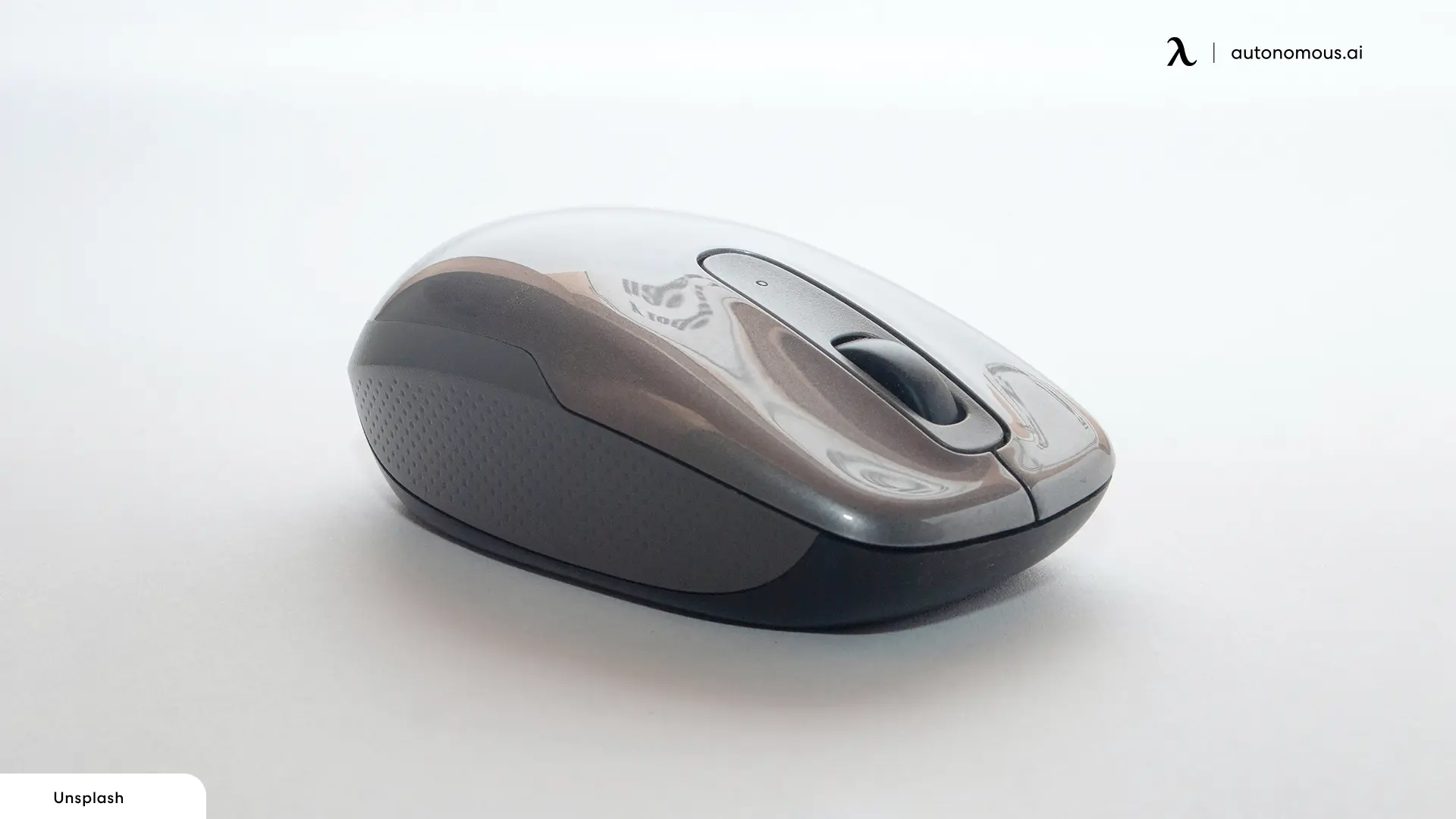
2. Ergonomic Evolution: Trackball, Vertical & Pen Mice
As computer use has increased, comfort has become central to mouse design. Ergonomic models are engineered to reduce strain on the wrist, forearm, and fingers—making them one of the fastest-growing categories in the different types of mouse.
- Travel mouse:
A trackball mouse features a ball on top of the device. Instead of sliding the mouse across the desk, you control the cursor by rotating the ball with your fingers or thumb. This design minimizes wrist movement, making it ideal for small workspaces and users managing repetitive strain issues.
- Vertical mouse:
A vertical mouse positions your hand in a natural handshake posture. This reduces pronation in the forearm and relieves pressure on the wrist. The shape looks unconventional at first, but it offers lasting comfort for those who spend hours at a desk.
- Pen or stylus mouse
A pen or stylus mouse resembles a digital pen. It allows fine control, making it suitable for precision work such as digital art, CAD, and graphic design. Unlike standard mice, it lets users hold the device like a pen, which can ease finger tension over long periods.
Each of these ergonomic types provides targeted support rather than general use, filling a different role than standard mice.
If you want to understand better about these types of computer mice, you can browse our detailed article about the difference between a mouse vs a trackball.
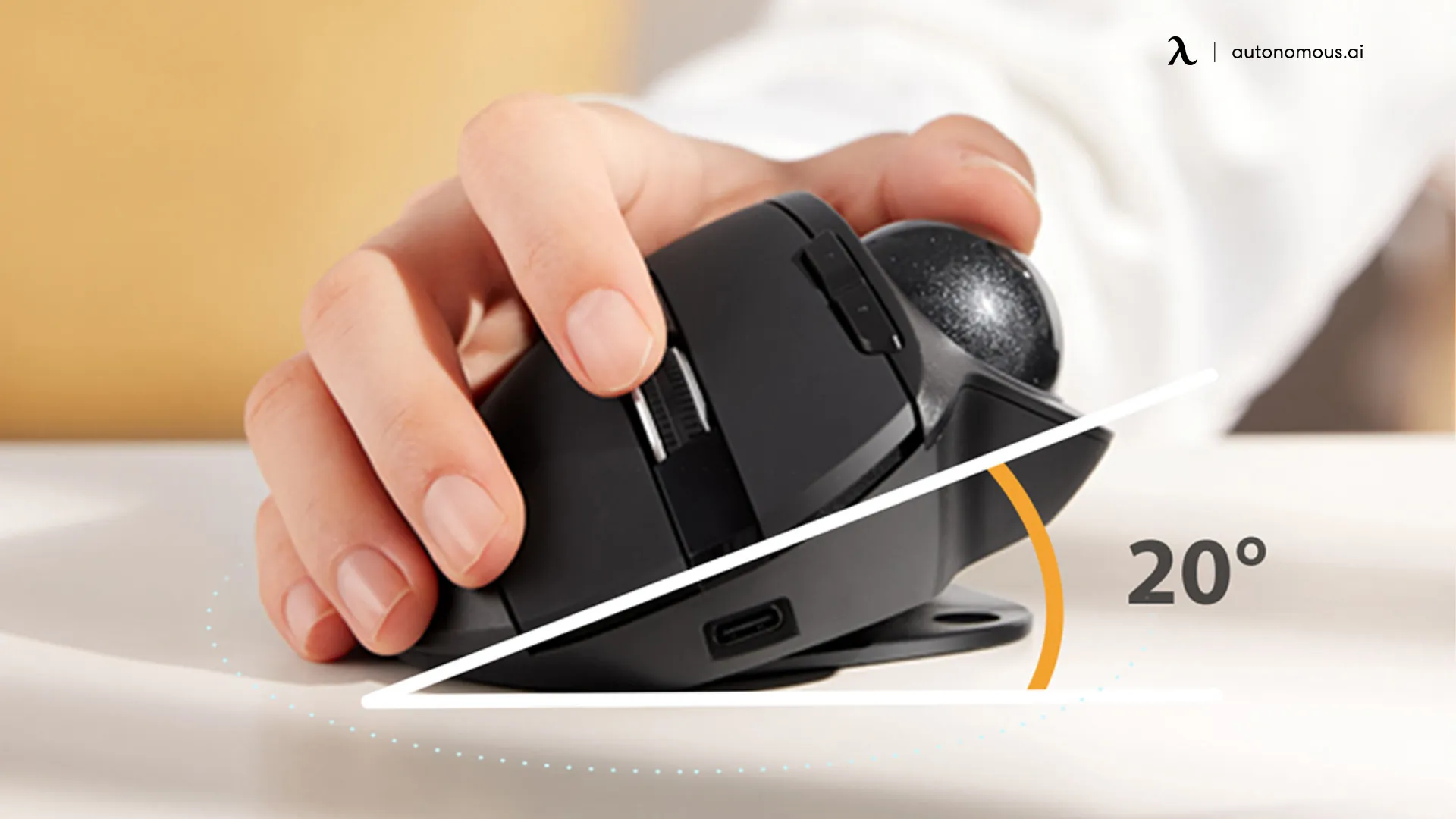
3. Portable & Wireless Types: Bluetooth, Silent & Travel Mice
Portability has become a defining factor in how people work, and that shift is reflected in this segment of the different types of mouse. Wireless, Bluetooth, silent, and travel mice are built for flexible setups, clean desks, and mobile workflows.
- Wireless mouse:
A wireless mouse connects through a small USB receiver or Bluetooth, removing the clutter of cables. Modern wireless technology offers reliable performance with minimal input lag, making it suitable for both office work and everyday use. If your mouse has no cord, you’ve likely identified what type of mouse you have.
- Bluetooth mouse:
A Bluetooth mouse eliminates the need for a dongle altogether. It pairs directly with laptops, tablets, and desktops, allowing seamless switching between multiple devices. This makes it a top choice for hybrid workers and anyone managing multiple screens.
- Silent click mouse:
A silent click mouse looks like a standard mouse but removes the sharp clicking sound. This makes it ideal for shared spaces, conference rooms, and late-night work sessions without disturbing others.
- Travel mouse:
A travel mouse is compact, often foldable or ultra-light, and designed to fit easily into a bag. It prioritizes mobility and convenience without compromising basic functionality. Some users pair them with a keyboard and mouse for PS5 to get more precise control and a PC-like feel when gaming on a console.
These portable mouse types show how the definition of mouse in computers has shifted beyond desks. They’re designed for speed, adaptability, and clean workspaces.
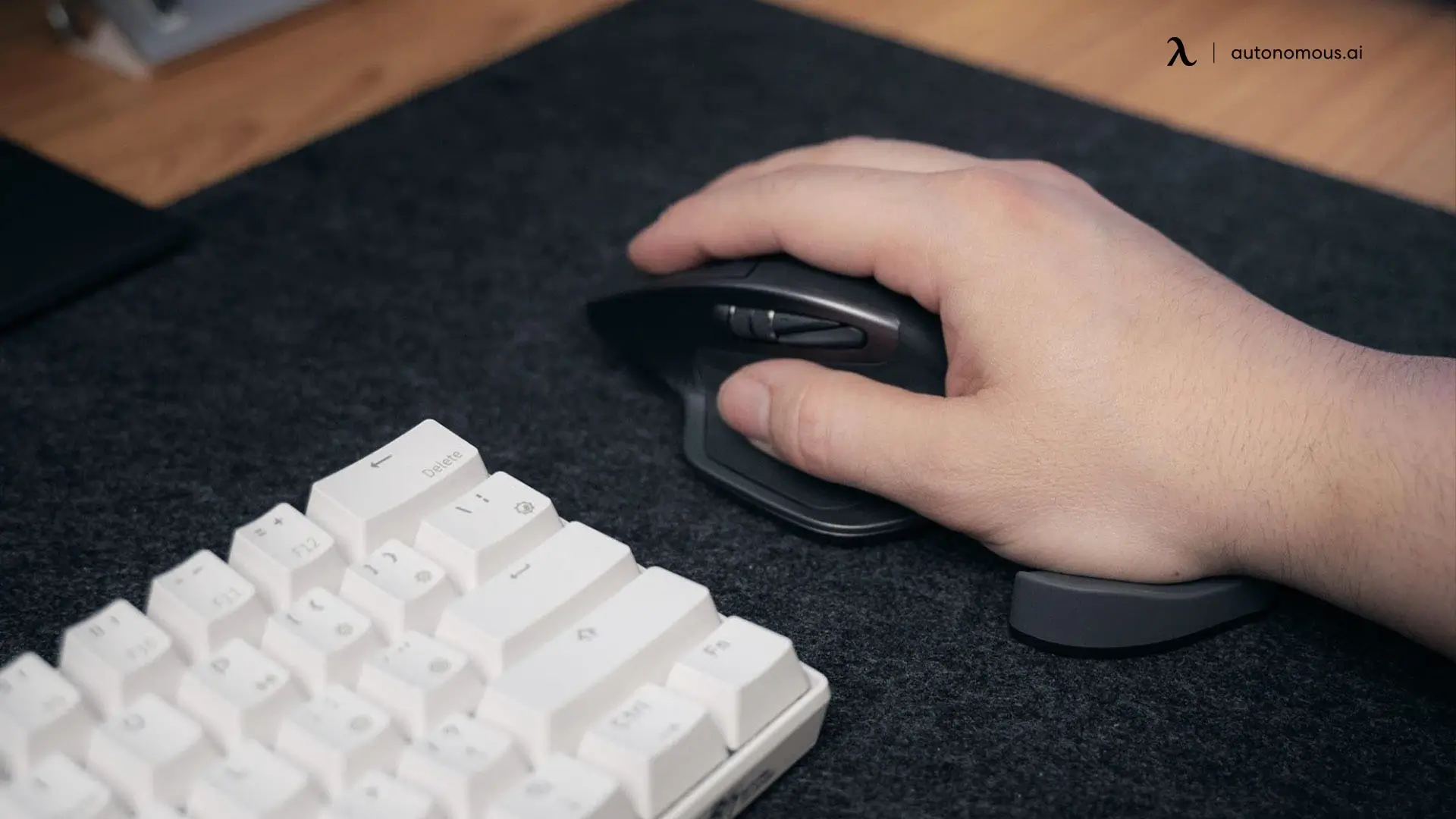
4. Specialized & Advanced Mice: Gaming, 3D, Adaptive, and Smart
Beyond everyday designs, some types of mouse are built for highly specific workflows and performance demands. These advanced models often feature enhanced tracking, customizable controls, or specialized navigation capabilities that standard mice can’t match.
- Gaming mouse:
A gaming mouse is designed to deliver speed, precision, and responsiveness. It typically includes a high DPI sensor, adjustable sensitivity, programmable buttons, and fast polling rates for minimal input delay.
For gamers, pairing the right mouse with complementary gear can enhance the overall experience, especially when building out gaming setup accessories for a smooth and organized space.
- 3D mouse:
A 3D mouse is built for professional 3D modeling and CAD environments. Instead of only moving a pointer across a flat screen, it allows navigation in three-dimensional space. Users can pan, zoom, and rotate models fluidly, making it an essential tool for architects, engineers, and product designers.
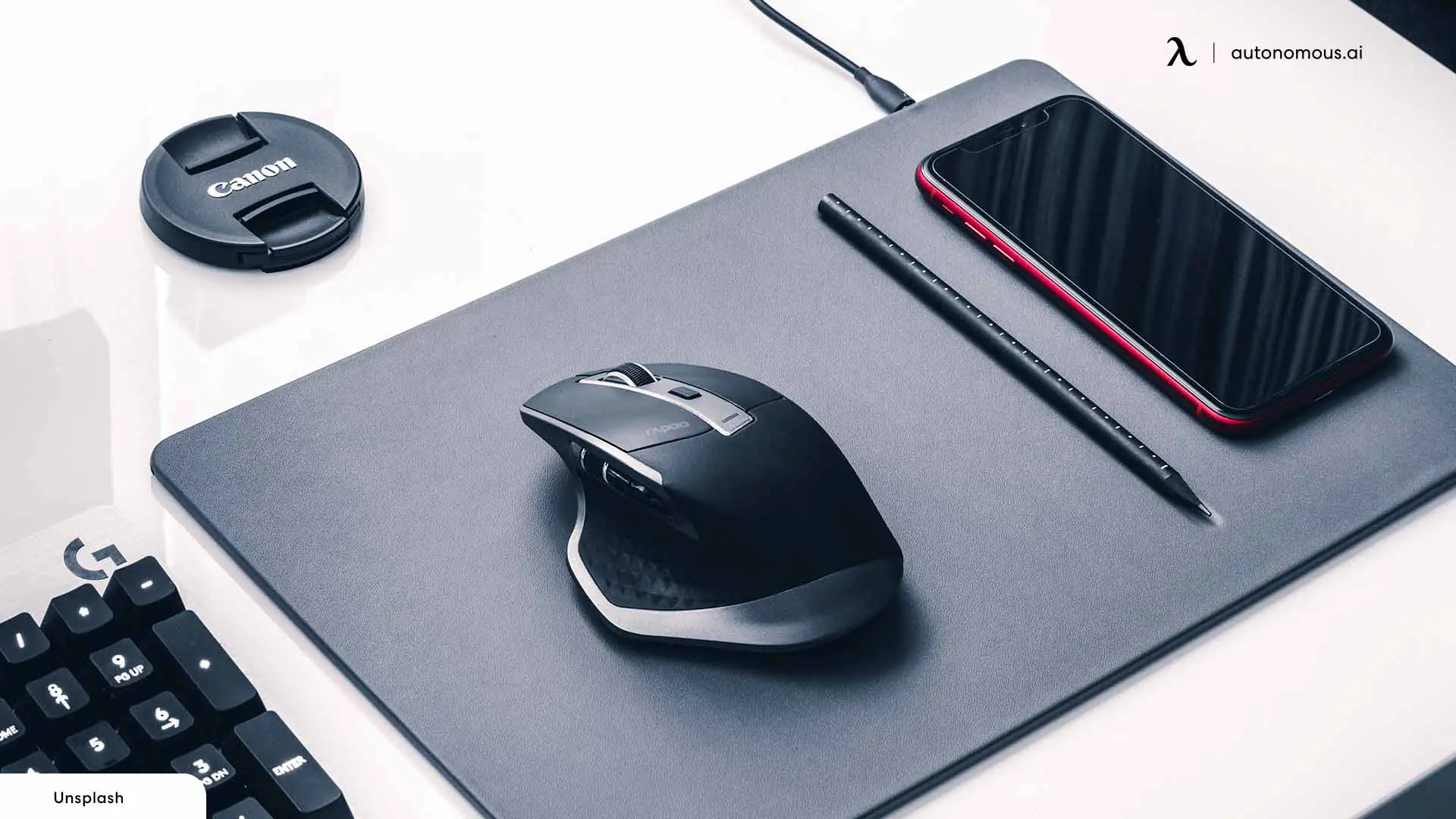
- Adaptive mouse:
An adaptive mouse focuses on accessibility. These devices are designed for users with physical limitations, allowing custom configurations such as larger buttons, foot controls, or single-handed operation. Their flexibility makes them an important category in the different types of mouse, ensuring more inclusive ways to interact with technology.
- Smart mice:
Smart mice represent a newer generation. These models integrate advanced features like gesture control, touch surfaces, multi-device switching, and sometimes app-level customization. Apple’s Magic Mouse is a good example—compact, smooth, and designed for gesture-based navigation. Users often look into practical setup questions such as how long to charge a Magic Mouse or how to configure Magic Mouse for Windows to work across devices. Some even extend its use by learning how to use iPhone as a mouse for a Mac, turning a phone into a precise input tool.
These advanced models show how the definition of mouse in computers has evolved. From gaming to 3D design and accessibility, each type is tailored to a specific need.
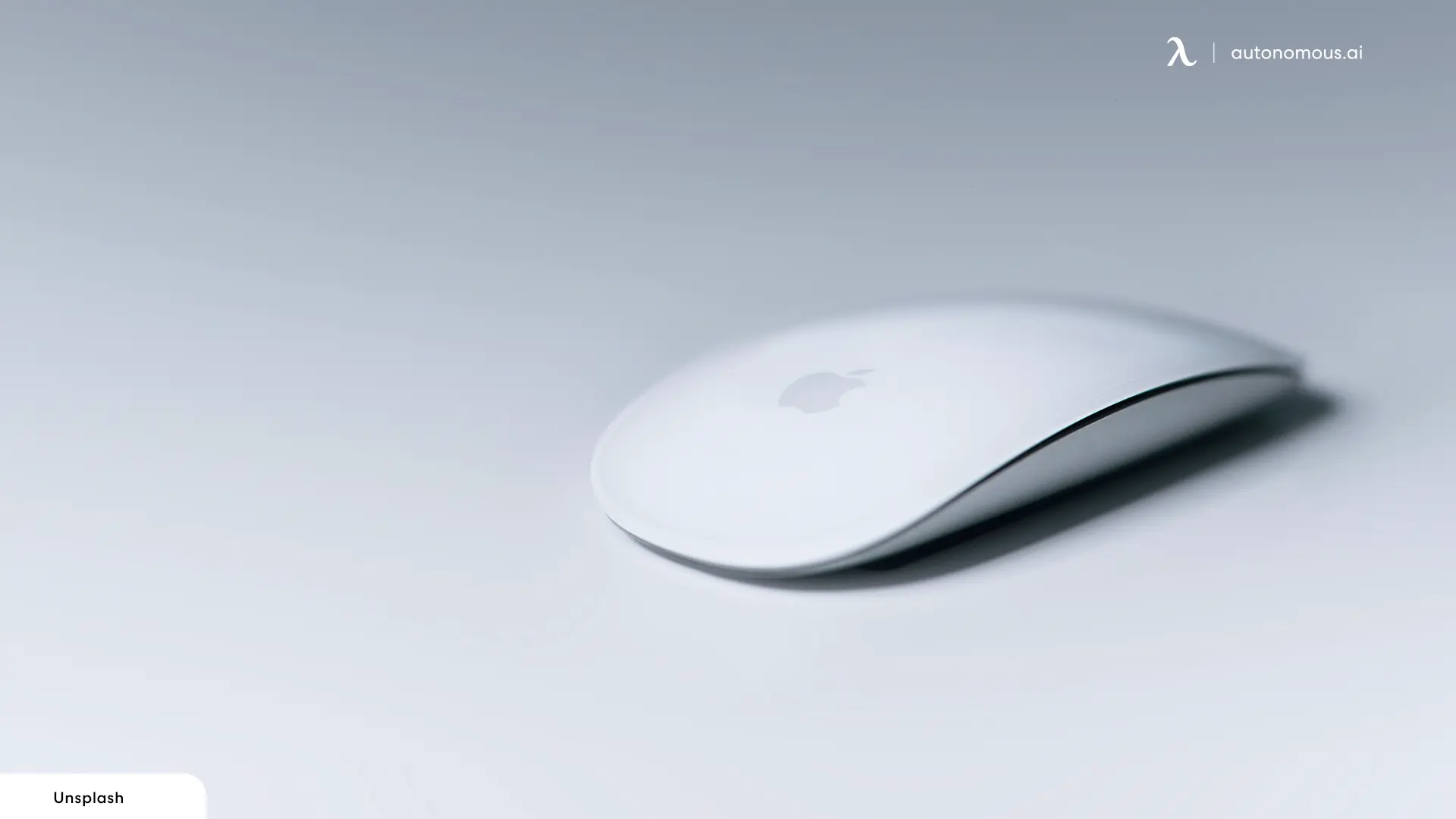
How To Identify What Type Of Computer Mouse You Have
If you’re wondering, "What type of mouse do I have?", here’s a quick way to figure it out. Look at the bottom of your mouse:
- If there’s a ball, it’s likely a mechanical mouse.
- If you see a light (usually red or green), it’s an optical mouse.
- If you notice a small laser or a special sensor, it’s likely a laser mouse.
- If there’s a ball on top that you rotate, it’s a trackball mouse.
Understanding the definition of a mouse in computer terms and the distinct characteristics of different types of mice can help you identify exactly what you’re using. It’s also useful when adjusting your settings for a better experience.
How To Choose The Right Mouse
Selecting the perfect mouse for your needs might seem straightforward, but it’s an important decision that can significantly impact your comfort, efficiency, and productivity. Whether you need a mouse intended for ergonomics, a gaming mouse for exceptionally fast gaming, or a standard USB mouse to register exercises daily.
Here’s a deeper dive into the factors to consider before making your choice:
1. Identify Your Primary Use Case
The first thing to consider is what you’ll be using your mouse for. Different tasks benefit from different mouse types, so identifying your main activities will narrow down your options.
- Gaming:
If you’re a gamer, you’ll need a gaming mouse. Look for features like high DPI (dots per inch), customizable buttons, and a comfortable grip. Precision and speed are key, so a laser mouse or a high-performance wired gaming mouse with low latency will be your best bet.
- General Use:
For basic office work, browsing, and daily computing, a wireless mouse or optical mouse will do the job. These mice offer a good balance of performance and ease of use on most surfaces, making them ideal for casual users.
- Creative & Precision Work:
If your day involves CAD, illustration, or photo editing, precision becomes more important. A laser, trackball, or stylus mouse allows for more controlled, fine movements. Their higher sensitivity makes a noticeable difference in tasks that rely on accuracy.
- Long Sessions:
For extended computer use, ergonomic and vertical mice support more natural wrist and hand positions, helping to reduce fatigue and long-term discomfort.
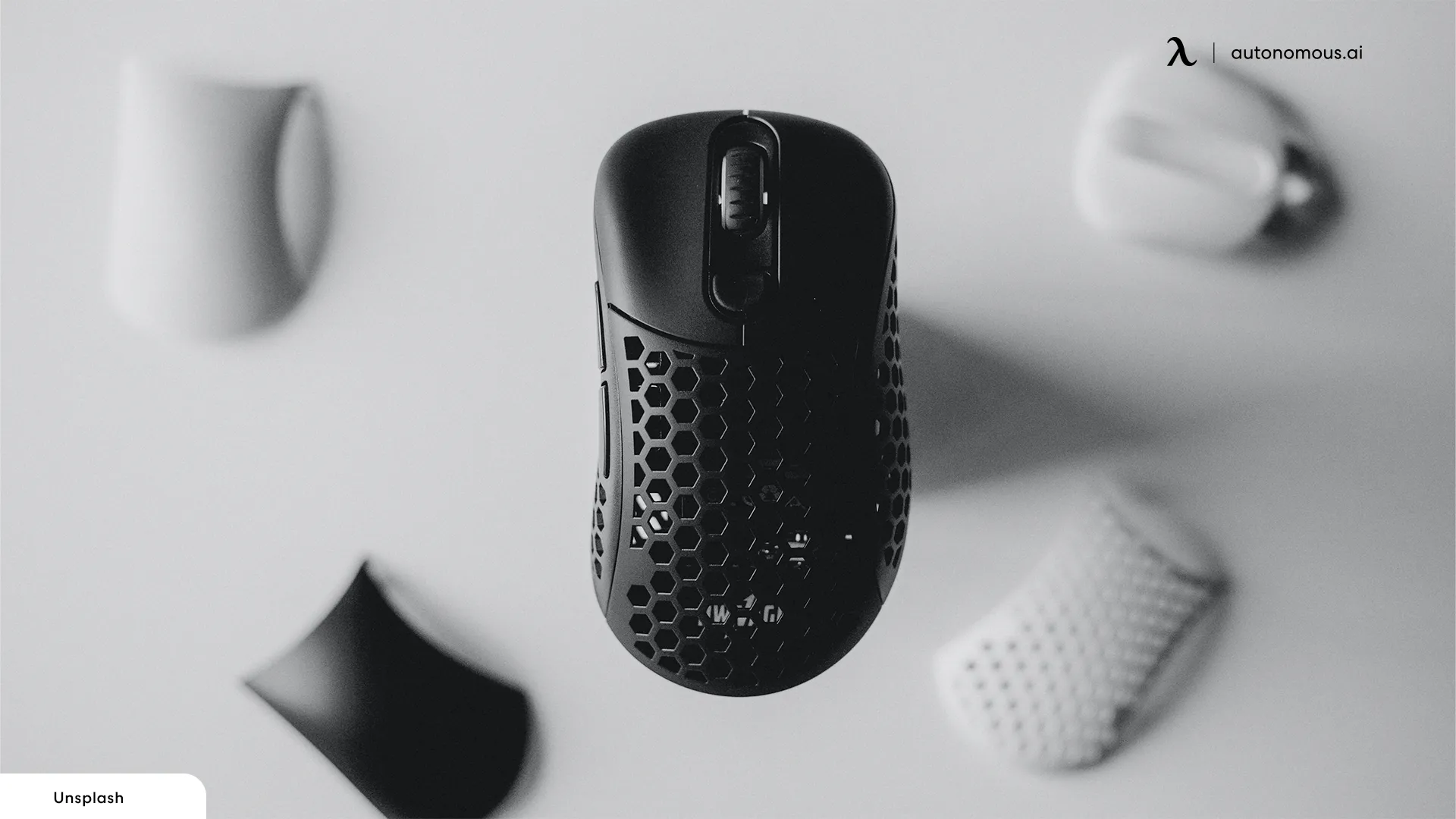
2. Comfort And Ergonomics
Comfort determines how well a mouse fits your hand and working style. The shape, size, and design should align with your natural grip and posture.
- Palm Grip: If your whole hand rests on the mouse, a larger, contoured shape provides solid support and reduces strain.
- Claw Grip: If you arch your hand slightly with fingertips angled down, a medium-sized, lightly curved mouse allows quick, controlled movement.
- Fingertip Grip: If you guide the mouse with just your fingertips, a compact and lightweight option is more comfortable.
Ergonomic designs take this further. A vertical mouse, for instance, positions the wrist and forearm in a handshake posture, easing muscle tension and minimizing rotation. Some designs support the palm and thumb more intentionally, distributing weight and pressure evenly. Small adjustments in posture, such as proper wrist angle and placement, can make a noticeable difference in comfort over time. A well-aligned desk setup, as explained in ergonomic mouse placement, often works hand in hand with the right mouse shape.
Extended use can reveal pressure points that aren’t obvious at first. Subtle strain near the base of the thumb is a common issue; many users who deal with thumb pain from using a mouse find relief with designs that better support the thumb or reduce the need to pinch the mouse. Discomfort that spreads through the forearm may point to posture misalignment or tension from gripping too tightly. This kind of forearm pain from using a mouse often improves with more neutral wrist positioning and better grip ergonomics.
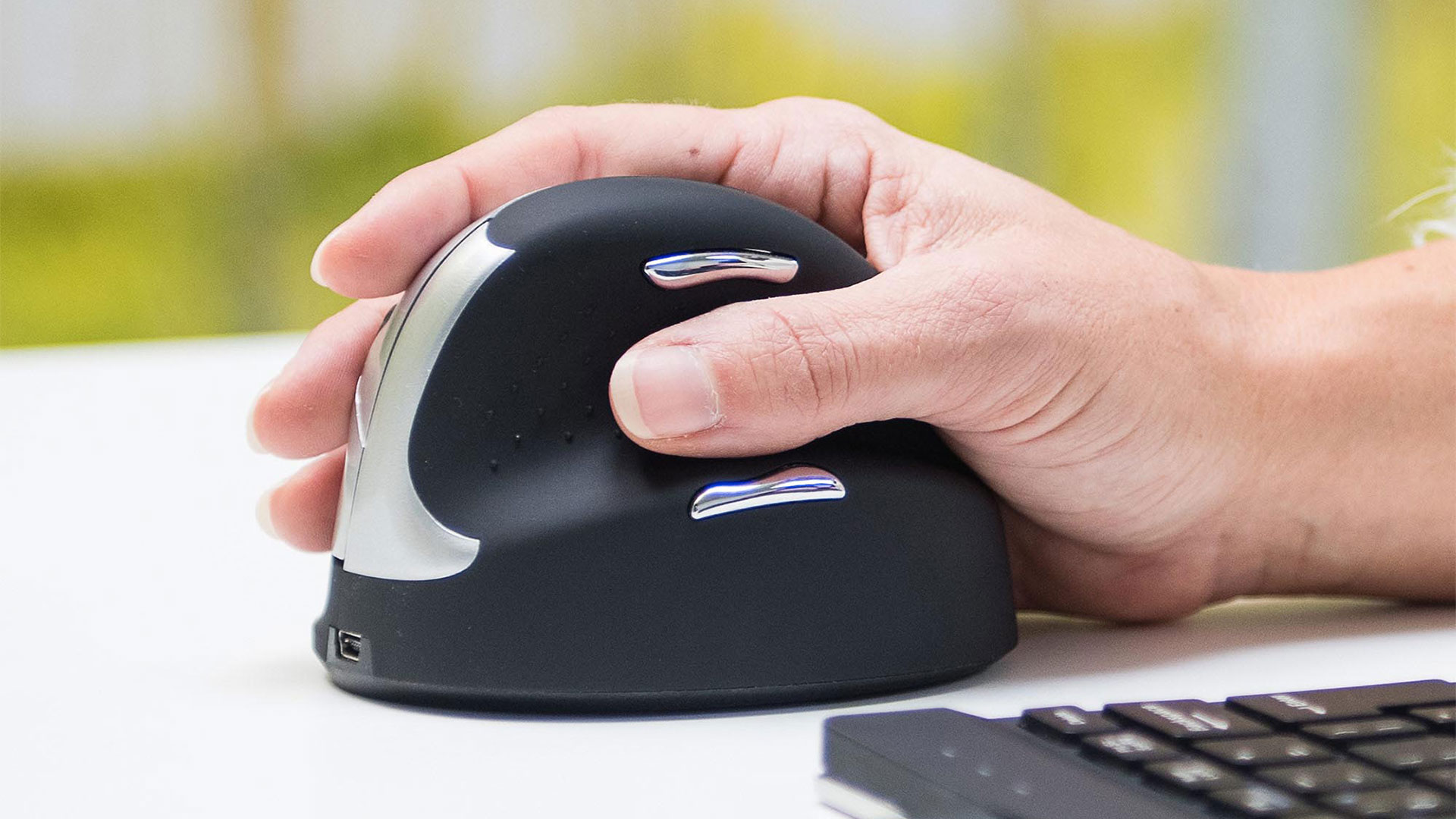
3. Connection Type: Wired vs. Wireless
When deciding between a wired and wireless mouse, think about the pros and cons of each, and how they fit with your setup.
- Wired Mouse:
Known for its stability and responsiveness. There’s no battery to charge, and input lag is virtually nonexistent. This makes it a popular choice for gamers, designers, and anyone who values precise control. The main drawback is cable management, as wires can clutter the desk or restrict movement.
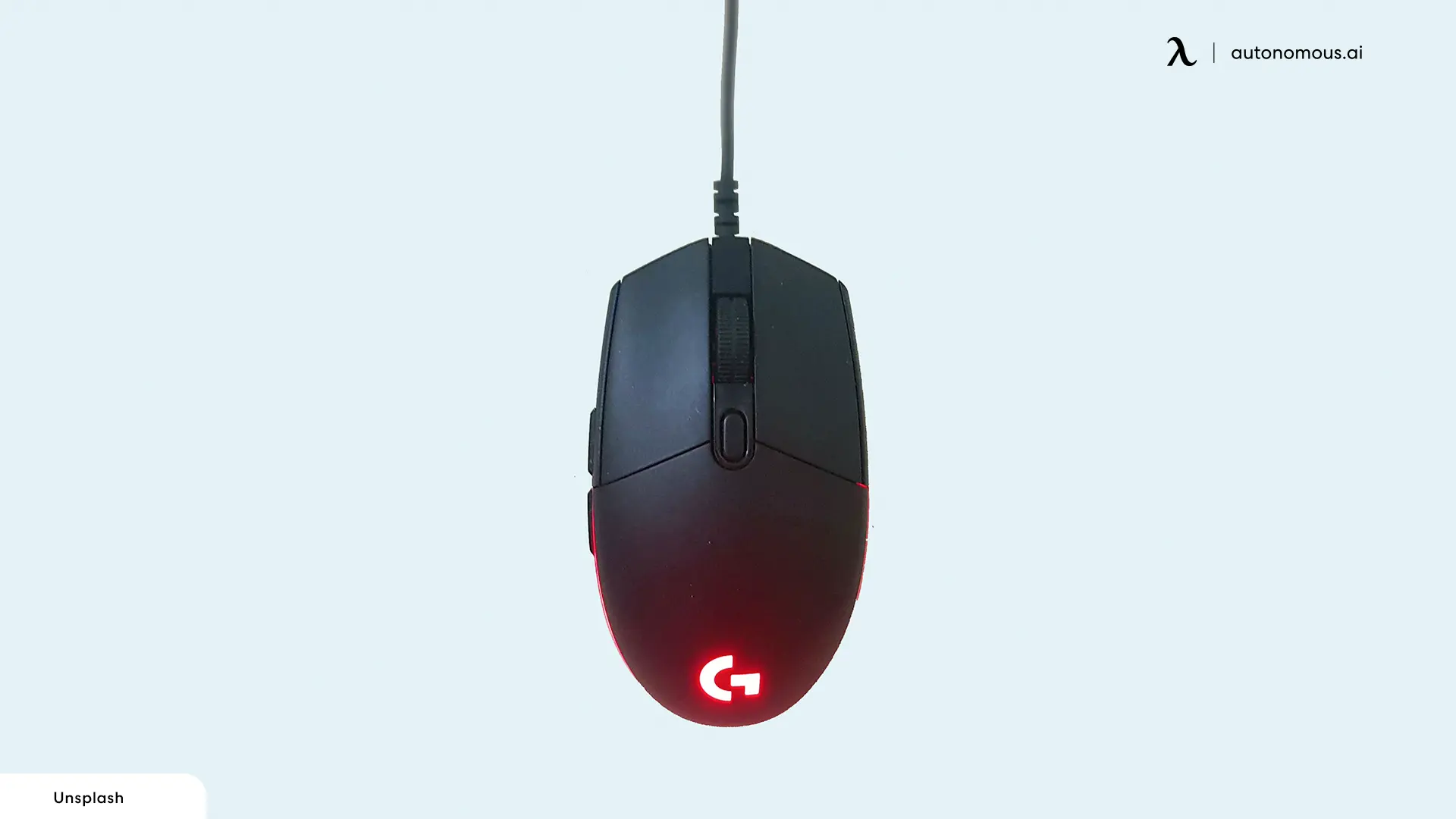
- Wireless Mouse:
Ideal for clean, flexible setups. Whether connected through a USB receiver or Bluetooth, wireless mice allow unrestricted movement. Bluetooth options are particularly useful for those working across multiple devices, while USB wireless is fast and straightforward. The trade-off is the need to monitor battery levels or recharge regularly, though modern models often last weeks on a single charge.
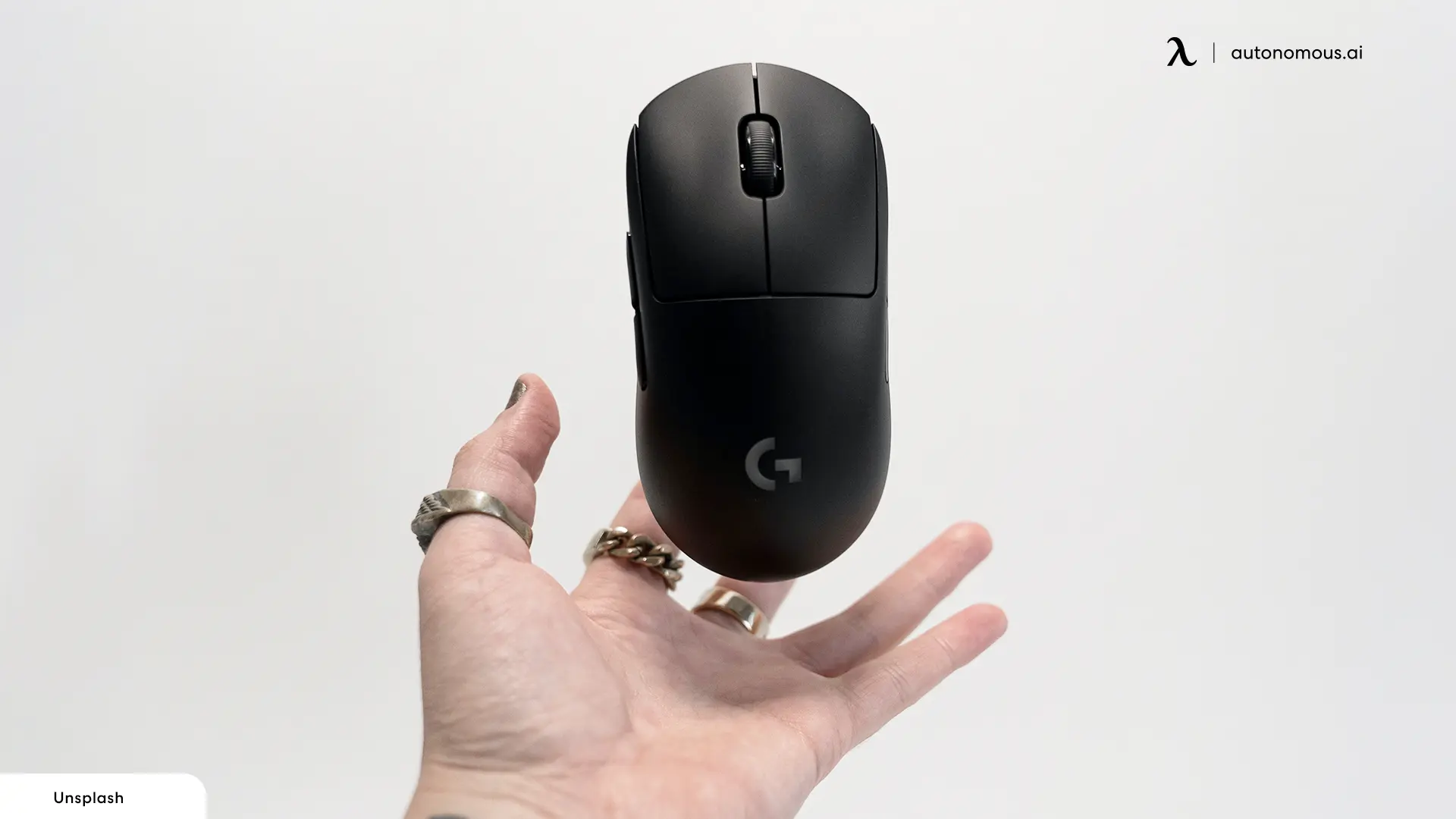
4. Sensitivity And Precision (DPI)
DPI, or dots per inch, determines how far the cursor moves in response to your physical hand movement. It plays a key role in how a mouse feels to use, especially in tasks where speed and accuracy are equally important.
- High DPI: Is well suited for tasks that demand fast, precise input—like competitive gaming, 3D modeling, and advanced editing work. Many gaming mice allow DPI adjustments on the fly, giving users control over speed and sensitivity.
- Low DPI: Provides steadier, slower movement, which can be more comfortable for everyday browsing or general office work.
How the pointer behaves isn’t just about DPI alone. System settings can also affect how the cursor responds. Features like mouse acceleration, for example, change how far the pointer moves based on how quickly you move the mouse. Understanding what mouse acceleration does can help fine-tune this behavior, and adjusting it — such as turning off mouse acceleration in Windows 11 — can make cursor control more predictable and consistent.
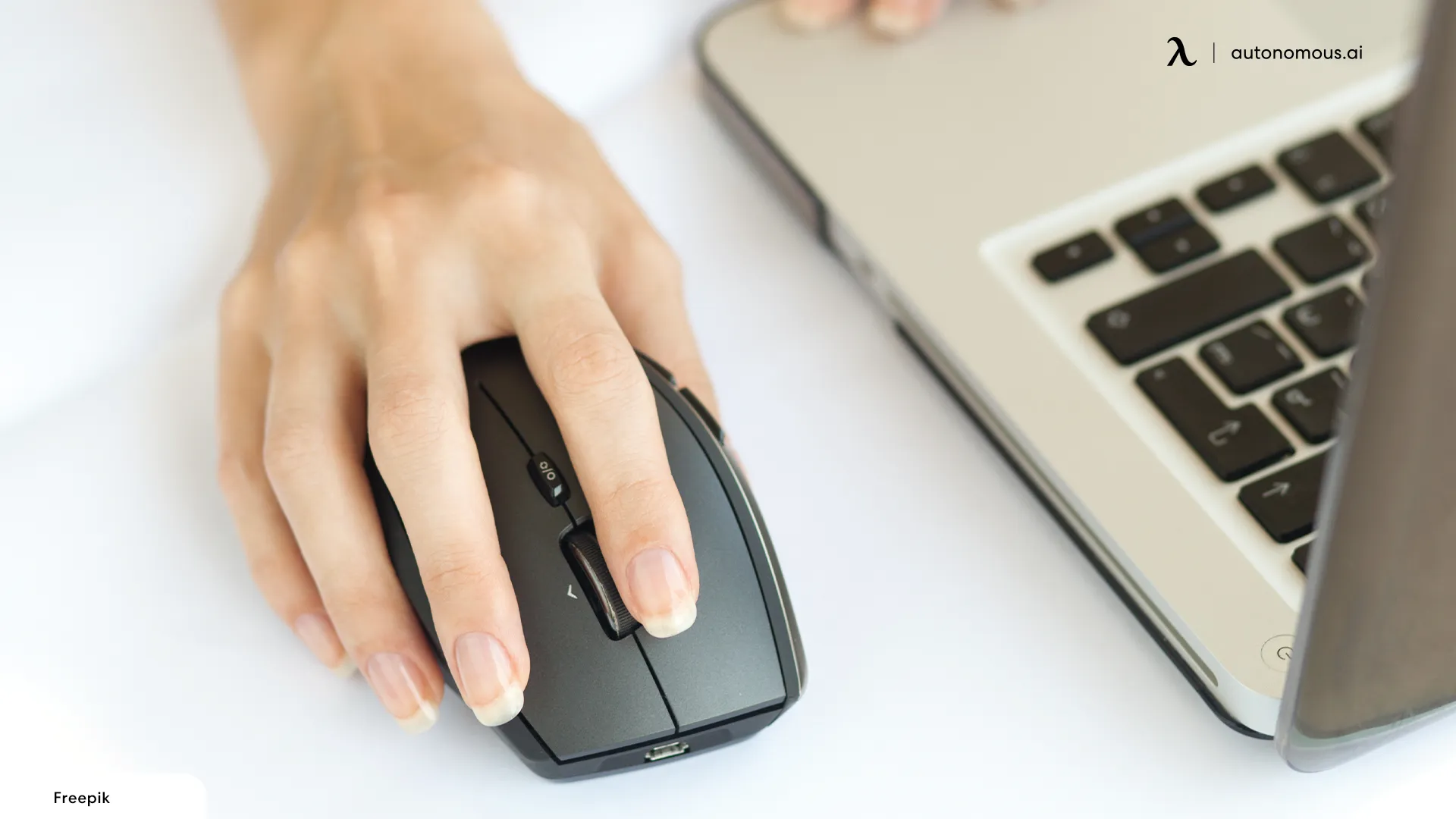
5. Surface Compatibility
Not all types of computer mice work well on all surfaces. Here’s what you need to know:
- Optical Mice: These types of computer mice work well on most flat surfaces but may struggle on shiny or reflective surfaces, like glass or high-gloss desks.
- Laser Mice: These are better for surfaces that optical mice struggle with, like glass, glossy surfaces, or highly textured desks.
- Trackball Mice: Great for limited space or ergonomic needs, but they work best on flat, clean surfaces. They don’t require a lot of movement, so a rougher surface won’t affect their performance much.
If your workspace has unusual surfaces (like glass desks or uneven textures), go for a laser mouse or trackball mouse, as these are more versatile on non-traditional surfaces.
6. Budget
Different types of mouse prices can vary dramatically. Some types of computer mice are inexpensive, while others can cost upwards of $100 or more.
- Budget Mice: Great for general use, these are typically optical mice or basic wireless mice. They provide reliable functionality for casual use.
- Mid-Range Mice: If you want better ergonomics, extra features (like customizable buttons), or improved precision, expect to pay a bit more for a gaming mouse or a laser mouse.
- Premium Mice: For the best performance and comfort, you’ll find high-end models like gaming mice with advanced features (high DPI, multiple buttons, customizable RGB lights) and ergonomic vertical mice that cater to long hours of use.
If you're looking for ways to enhance your home office setup, consider incorporating some high-tech home office essentials or checking out these office productivity gadgets to make your workspace even more efficient.
FAQs
1. What are 2 computer mice called?
Two common types of computer mice are the optical mouse and the laser mouse. These types of computer mice are often used interchangeably, though the main difference is in the type of sensor used—LED light for optical and laser for laser mice.
2. What is the best type of computer mouse?
The best type of computer mouse depends on your needs. For general use, an optical mouse is great. If you need precision for gaming or design, go for a laser mouse. For ergonomic needs, a vertical mouse is a top choice.
3. Which mouse is better, optical or laser?
Laser mice tend to be more precise and work on a wider range of surfaces, including glossy ones. Optical mice are good for standard tasks and are more affordable. If you need higher accuracy, a laser mouse might be a better choice.
4. What is the difference between a computer mouse and a trackball?
A computer mouse requires you to move the entire device across a surface to move the cursor. A trackball, on the other hand, has a ball that you rotate to control the cursor, allowing for less hand movement and often reducing wrist strain.
5. What’s the difference between a trackpad and a trackball?
A trackpad is a flat surface where you drag your fingers. A trackball stays still while you rotate a ball to move the cursor.
6. Do all wireless mice have lag?
Not anymore. High-end wireless mice offer near-zero latency, but budget ones may still show slight delay compared to wired models.
7. What is the most comfortable mouse?
The most comfortable mouse depends on hand size, grip style, and how long you use it. Ergonomic mice, especially vertical designs, reduce wrist rotation and muscle strain. Users dealing with discomfort often prefer models that support the palm and thumb more naturally.
8. Which type of mouse is best for wrist pain or ergonomic use?
For wrist pain or ergonomic support, vertical mice and other ergonomic designs are recommended. These models keep the wrist in a neutral handshake position, which reduces strain over time.
9. Are silent or travel mice worth it?
Silent mice reduce click noise without sacrificing functionality, which is useful in shared workspaces and quiet environments. Travel mice are compact and lightweight, making them convenient for mobile work or pairing with other devices like laptops and tablets. Both are great for people who need portability or a more discreet setup.
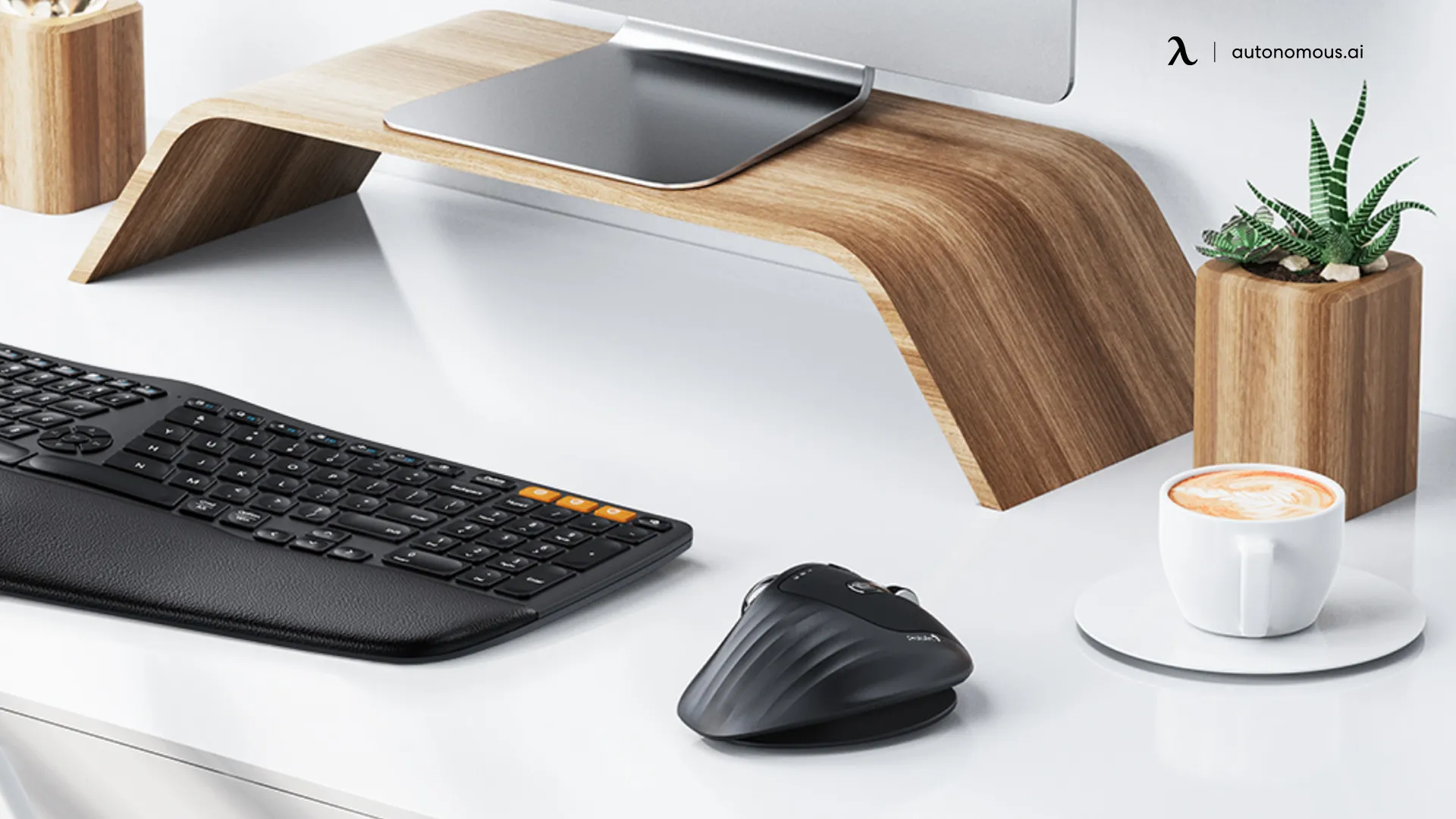
Conclusion: Finding Your Perfect Fit
Choosing the right mouse is about more than just personal preference. The shape, sensitivity, connection type, and ergonomic design each influence how your hand interacts with your workspace over time. A good fit supports your daily routine without drawing attention to itself — it simply works with your body, not against it.
What matters most is aligning the mouse to the way you actually use your computer. A gaming mouse may feel essential for high-speed precision, while an ergonomic or vertical design can quietly prevent discomfort during long workdays. For creative work, specialized tools like stylus or 3D mice give more control where accuracy matters most.
Comfort is never just about the device itself. Small adjustments to hand positioning, desk height, and wrist support can make a noticeable difference. Many users combine their mouse with an ergonomic wrist rest for mouse to reduce pressure and maintain a neutral alignment through the day. Pairing the right mouse with the right tools often creates a more seamless setup — and exploring must-have PC gadgets can help round out a workspace that feels both efficient and comfortable.
The best mouse is the one that quietly fits into your rout.
Spread the word
.svg)





